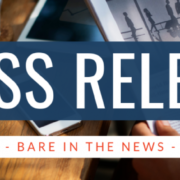SAFETY AND SUSTAINABILITY: THE EMERGING PILLARS OF WORK CULTURE
One of the popular buzzwords quoted in corporate investor meets and annual reports in recent times have been ‘Sustainable’.
Over 93% of CEOs see sustainability as necessary for their company’s future. Sustainability has moved from being just an ‘add-on’ into ‘that’s how we do things here.’
The same goes with safety; organizations find their financial, social, and environmental risks, obligations, and opportunities better met when focused on safety in workplace culture. So how are these two parameters – safety and sustainability shaping the next-gen workplace cultures? In this post, we dive into this question.
WHAT DOES SUSTAINABLE CULTURE MEAN?
Sustainability and culture are increasingly used interchangeably or together in corporate narrative, despite both words having different connotations.
The World Council on Economic Development perhaps gives the most cited definition of sustainability – practices that “meet the needs of the present without compromising the ability of future generations to meet their own needs” (Brundtland, 1987).
Occupational Safety and Health Administration (OSHA) says: “Sustainable organizations strive to balance the triple bottom line of people, planet, and profit to achieve long-term success and viability.”
Hence, a sustainable culture means businesses are managing the ‘triple bottom line.’ This includes making decisions that take financial, social, and environmental risks, obligations, and opportunities into account.
This means, accounting for environmental and social implications in business reporting is not enough. Sustainable businesses produce jobs, healthy ecosystems, and strong communities. Sustainable enterprises thrive in healthy economic, social, and environmental systems.
Companies across the world are aggressively chasing sustainability goals to become carbon neutral, among others. To do that, companies often focus on establishing sustainable cultures in the workplace.
For instance, one of the world’s biggest sports-tech companies, Nike, launched its Reusable Dishwasher Program, encouraging its employees not to buy or bring disposable lunch containers to work. As a result, Nike cut single-use containers (cups and bottles) by 16,000 pounds per quarter, and by the end of the year, trash per employee was down 11.5 percent.
Another notable example of how global companies harness workplace culture to attain sustainable goals is the case of chip-giant Intel. The company reportedly allows compensation to their employees who uphold recycling ethos on campus. As a result, E-waste bins populate the company’s California campus, where employees are encouraged to dispose of their old electronics for recycling. The result? Intel can recycle 75% of its total waste and is reportedly one of the world’s most sustainable-minded corporations.
Safety and Sustainability: Two Sides of a Coin
At their core, safety and sustainability concepts are geared towards the same objective – preserving resources. And when it comes to safety, the resource that is in question is the human workforce. An organization cannot be called sustainable if it does not focus on protecting the health and safety of its employees.
Some of the Sustainable Development Goals (SDGs) adopted by member countries at the landmark United Nations Summit in 2016 specifically deal with employee health and safety. These goals pertain to protecting labor rights, promoting safe workplace conditions, managing hazardous chemicals, etc.
OSHA has also been instrumental in promoting these guidelines and standards to ensure sustainable practices and reporting to protect the interests of workers.
SAFETY AND SUSTAINABLE CULTURE: HOW CHECKLISTS CAN HELP?
Almost every organization has a number of industry-specific health and safety risks that they need to take care of. Many companies put multiple guidelines and SOPs in place to mitigate and tackle each of these risks. However, it is quite a daunting task for an organization to ensure that these norms are being adhered to across all units.
This is where BARE can help. The BARE-IFY Audit App is an advanced safety compliance and auditing tool is an audit and inspection platform with robust incident reporting mechanisms and super user-centric UI. With our intelligent checklists and state-of-the-art mobile applications, ultra-modern interface, and fast team adoption, you can seamlessly implement and monitor your organization’s safety policies and procedures.
Our pre-created, easy-to-use, and logic-infused checklists make safety and sustainability compliance easier. Through the app, you get a 360-degree view of all your business operations and can take corrective actions against any safety violations in real-time.
The application offers industry-standard safety, which means large organizations’ sensitive and mission-critical data are in safe hands. Pulse also integrates seamlessly with your existing interface and is 100% mobile-ready.
Some stats to support BARE-IFY’s excellence in meeting safety & sustainability goals are:
- 23% environment impacts reduced
- 33% sustainable goals boosted
- 73% risks minimized by fewer incidents
- 9-hours saved in each inspection
As the quote goes – “Safety does not happen by accident,” to preserve one of the most valuable resources of your organization, i.e., your workforce, additional steps need to be taken. Only then will your organization prove to be sustainable and resilient in the true sense.







